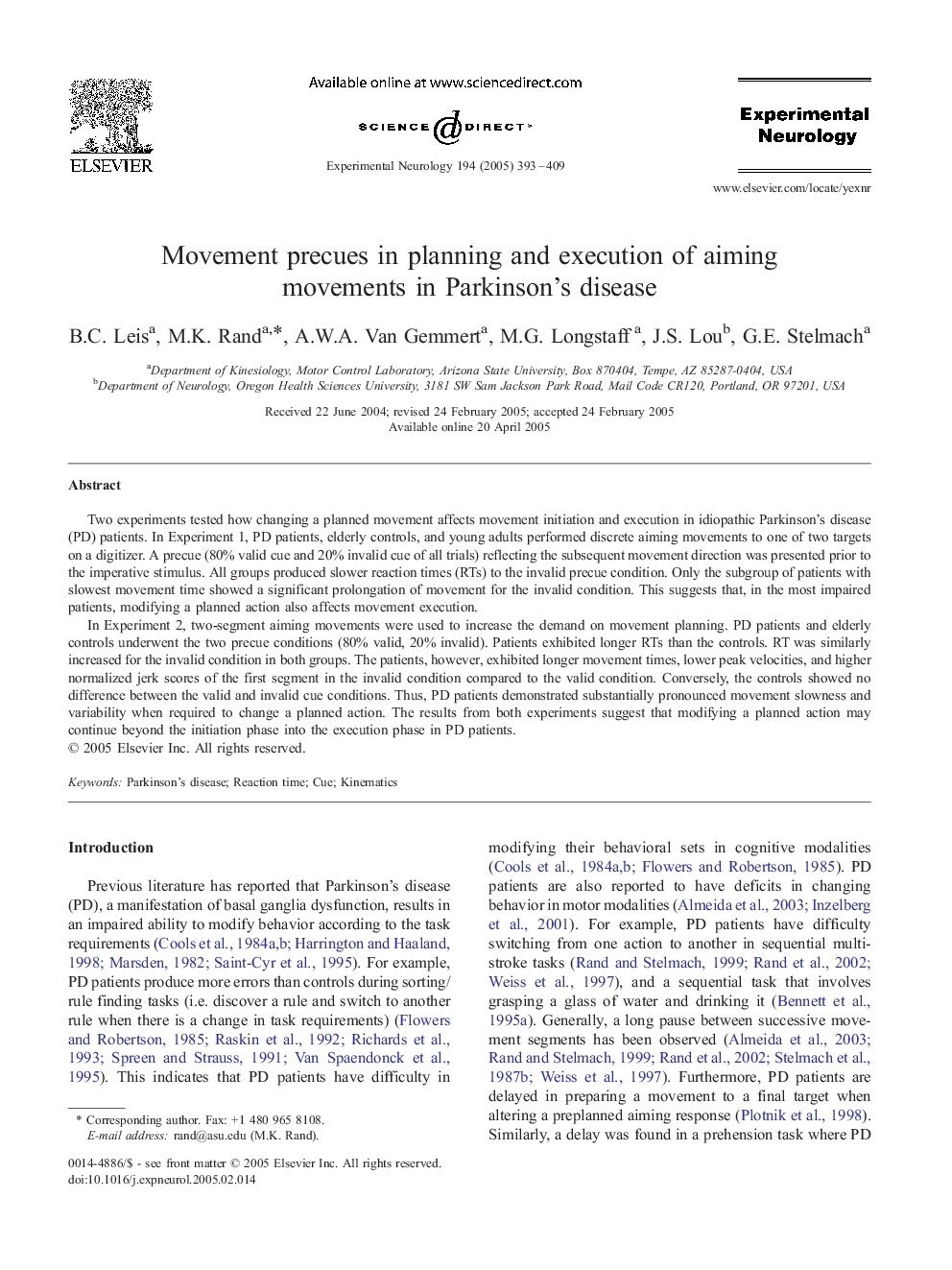| Article ID | Journal | Published Year | Pages | File Type |
|---|---|---|---|---|
| 9192108 | Experimental Neurology | 2005 | 17 Pages |
Abstract
In Experiment 2, two-segment aiming movements were used to increase the demand on movement planning. PD patients and elderly controls underwent the two precue conditions (80% valid, 20% invalid). Patients exhibited longer RTs than the controls. RT was similarly increased for the invalid condition in both groups. The patients, however, exhibited longer movement times, lower peak velocities, and higher normalized jerk scores of the first segment in the invalid condition compared to the valid condition. Conversely, the controls showed no difference between the valid and invalid cue conditions. Thus, PD patients demonstrated substantially pronounced movement slowness and variability when required to change a planned action. The results from both experiments suggest that modifying a planned action may continue beyond the initiation phase into the execution phase in PD patients.
Related Topics
Life Sciences
Neuroscience
Neurology
Authors
B.C. Leis, M.K. Rand, A.W.A. Van Gemmert, M.G. Longstaff, J.S. Lou, G.E. Stelmach,
